|
This post shows the stages in working towards a completed page. This is the first story page, though not the first drawn page. The story was initially begun as a four page story in Semester 1, with the intention of submitting it for the Observer Graphic Short Story Competition, however i decided to put it on hold. There were two reasons for this: firstly, that I decided I did not have time for extra-curricular work; and secondly, that while I felt the narrative worked in four pages, it did not do justice to the depiction of the artist's working processes. Instead I decided to rework the story as part of my Major Project. The first step was a to repaginate the story, with three concerns in mind: to suit the smaller 'Dundee' page size, to elaborate on the story/dialogue where needed, and to incorporate more large images. The panels were mostly a regular square size (initially twelve panels to a page), and I wanted to keep to this format, except where there was a reason to change it. This meant that to make a square panel larger, it needed to take up the space of four panels. For example, the three panels originally comprising the first row of my original version, (Figure 1), would be a whole page in the revised version (Figure 2). While this seemed like an efficient use of an aborted work, in fact, typically panels blown up to this extent looked weak (compare figures 1 and 2, above), and needed re-rendering or complete redrafts. My recent use of Manga Studio's 3D models, also made most of the initial panels look poor by comparison . The resizing process retained the letter point size, meaning I had to individually resize the balloons. In short, this process was a more work that it initially seemed. I revised the configuration of the panels (Figure 3), and think this works better. It both seems more fitting to make the first panel the largest, and to give me more space to suggest the idea that the horseman is Uccello's imaging of he scene being described. Panel 1 at this size needs a complete redraw, but that feels a worthwhile investment to impress with the first panel - a splash panel. The original figures were only 'acceptable' at the smaller size, so I set about reworking them. Using the original drawings as a guide, I created some figures in approximately the same positions using Manga Studio's 3D models. It has a few figures already in seated poses; one of these 'Taking a Note' was a good starting point for Uccello. In arriving at the version above, I went through multiple tweaks of the poses, size, rotation and position. A key consideration was to create the best composition incorporating the image of the horseman - to suggest he was emanating from Uccello, as the latter tries to imagine the scene described. The version in Figure 4 has the advantage of showing more of the horse and rider, though has the disadvantage of losing the visibility of the tail behind Uccello, which I had thought was a nice feature. I'll keep working on this. I often can draw straight in ink over the 3D models, but here I decided to do some sketching first (the magenta layer in Figure 5, below). I can usually add clothes and character features directly in ink (now that I've done them a few times), but this panel had some more difficult features. The stools are difficult, because they need to look like that are supporting the figure, and in this case (a story about a perspective pioneer!) need to be in believable perspective. It was also some work to correctly place the drawing board to credibly appear that Uccello was both holding it, and drawing on it. My original version where he is holding the board with his left hand, was compositionally better, however I decided to change the hands to be consistent with other panels, where he is drawing with his right hand. This exemplifies tension in this type of 'non-fiction' project between accuracy and aesthetics, that is analogous to the tension in autobiographic between truth-telling and narrative. While the 3D models are helpful, the result is still dependent on the ability to make of them a credible scenes, and a number of decisions around, poses, camera angles, incorporation of key details, interaction between the figures, and with props and sets; and juxtaposition with other pictorial elements. Figure 6, above, shows the final inked figures. It is a challenge on Digital to manage line thickness: for these figures I stuck to pen size 17, but using a 15 for detail like faces and hands. Drawing over reference layers, brings an additional challenge that you can't see your line so clearly: it's tempting to lean harder to get a line you can see, but it can look crude once you hide the reference layers. There is still variation in any line due to the pressure applied, but I'm getting better at this, and a degree of variation is, I think, appealing. A implicit challenge of the art on these comics is they need to sit between comics/illustration and fine art traditions. I think the evidence of the human hans here helps with that. These were some of the concerns in inking this.
0 Comments
Leave a Reply. |
AuthorGraham Johnstone ~ Master of Design - Comics and Graphic Novels student 2016-17 Archives
August 2017
Categories |
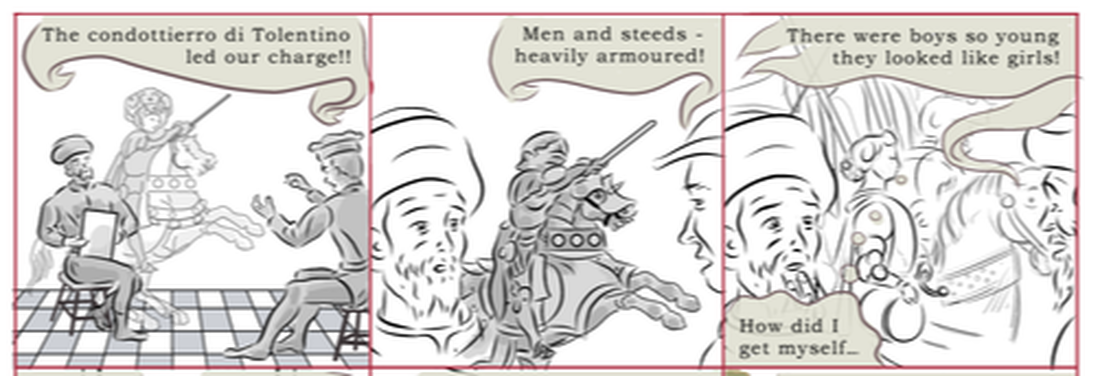
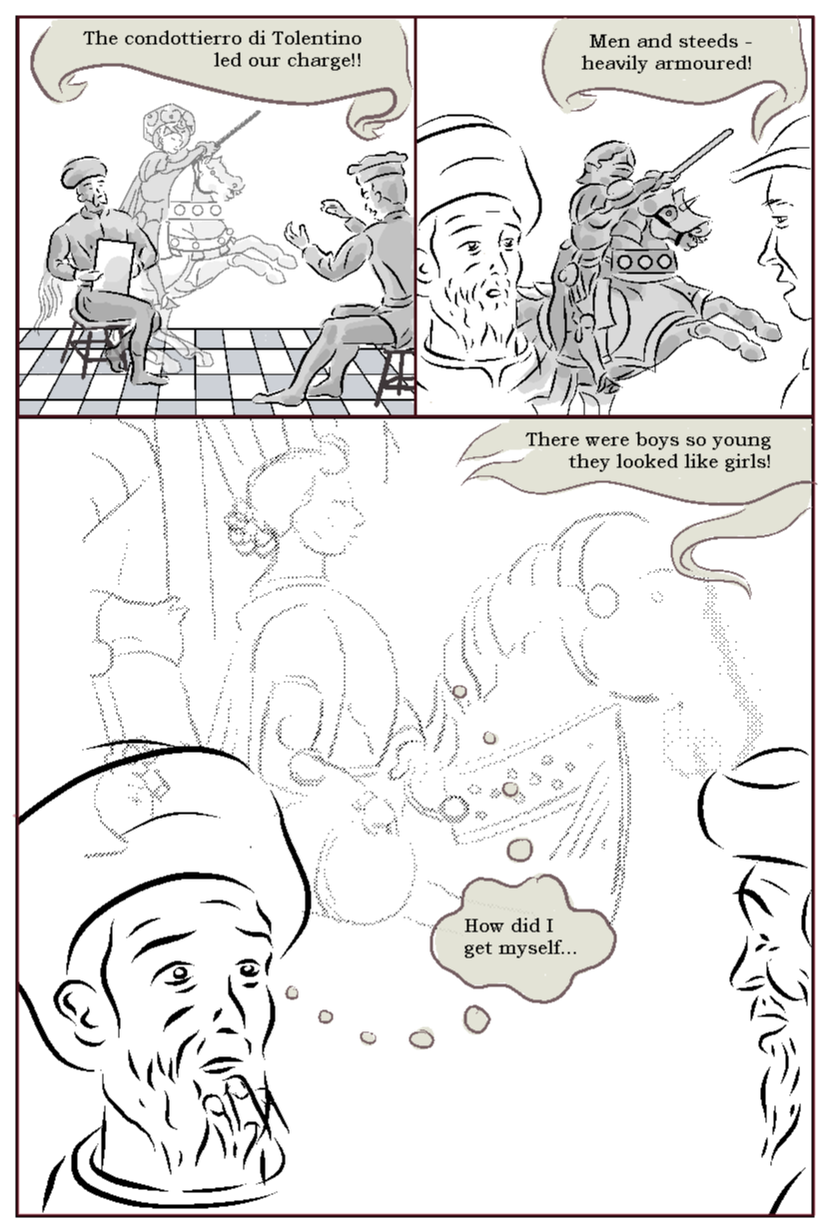
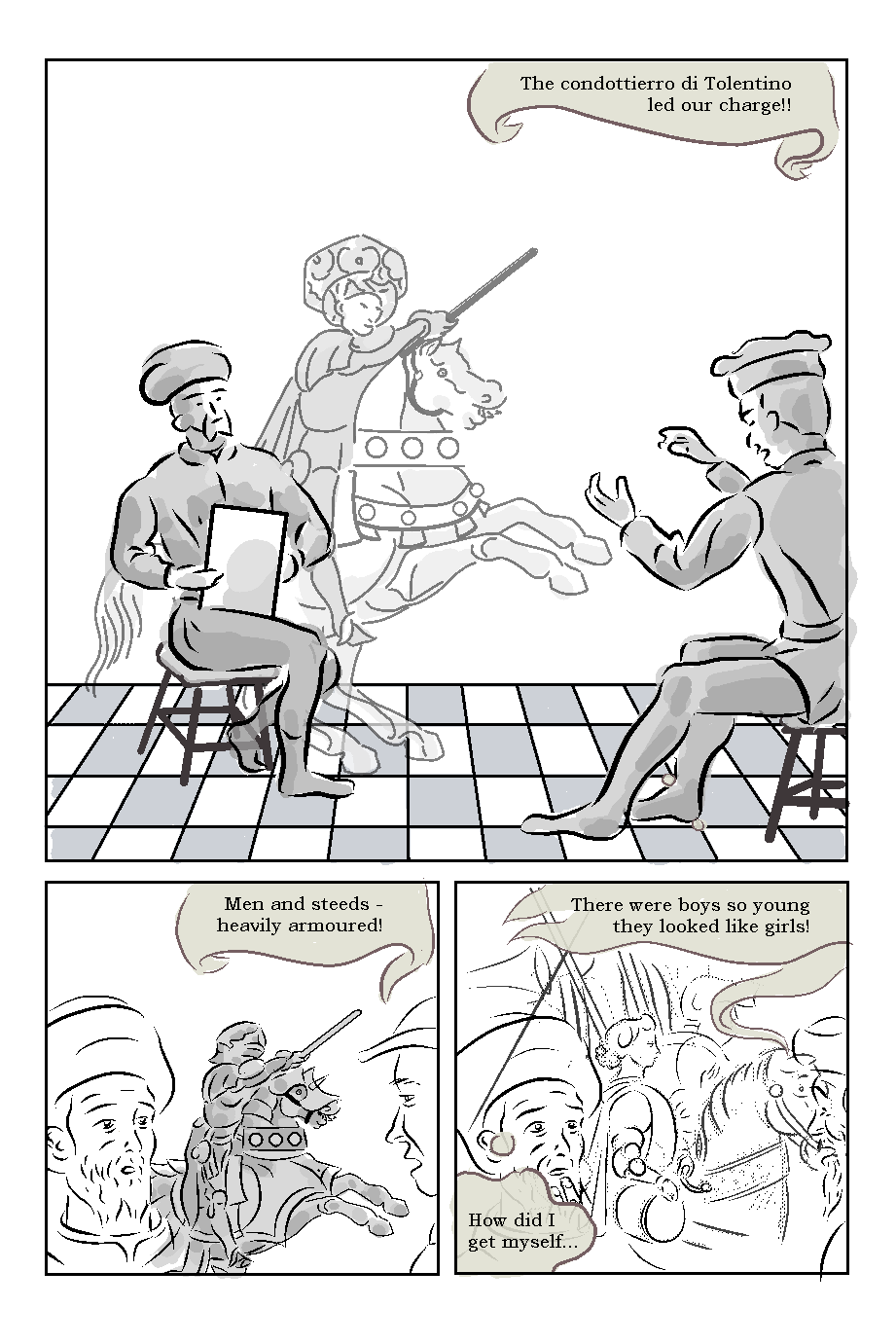
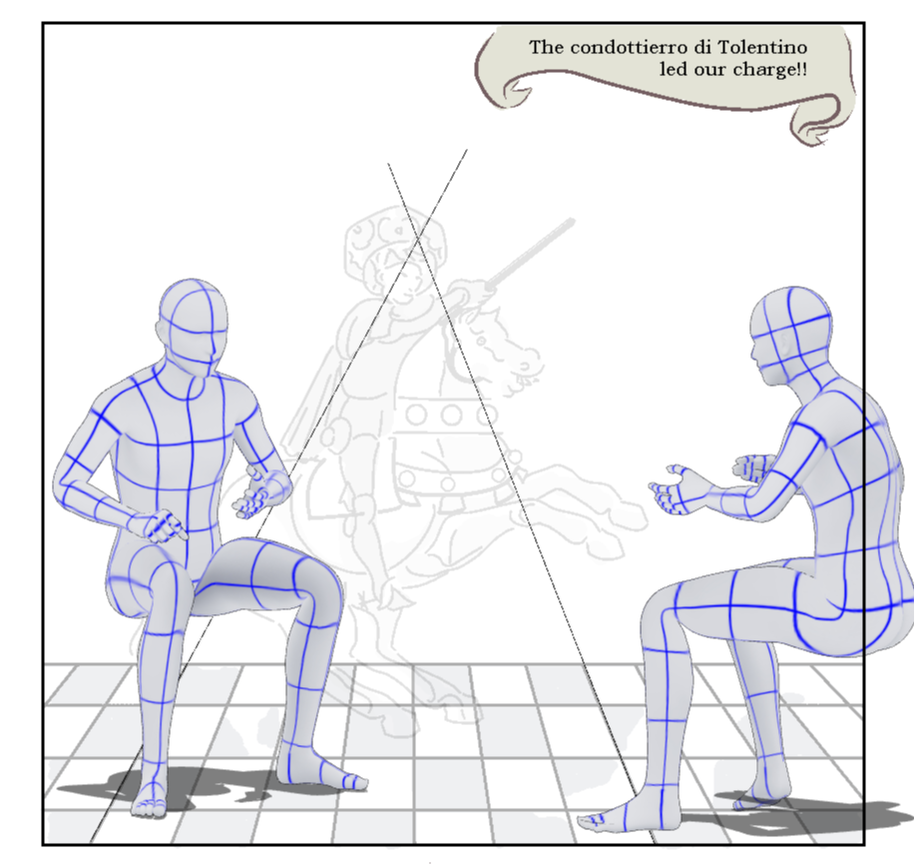
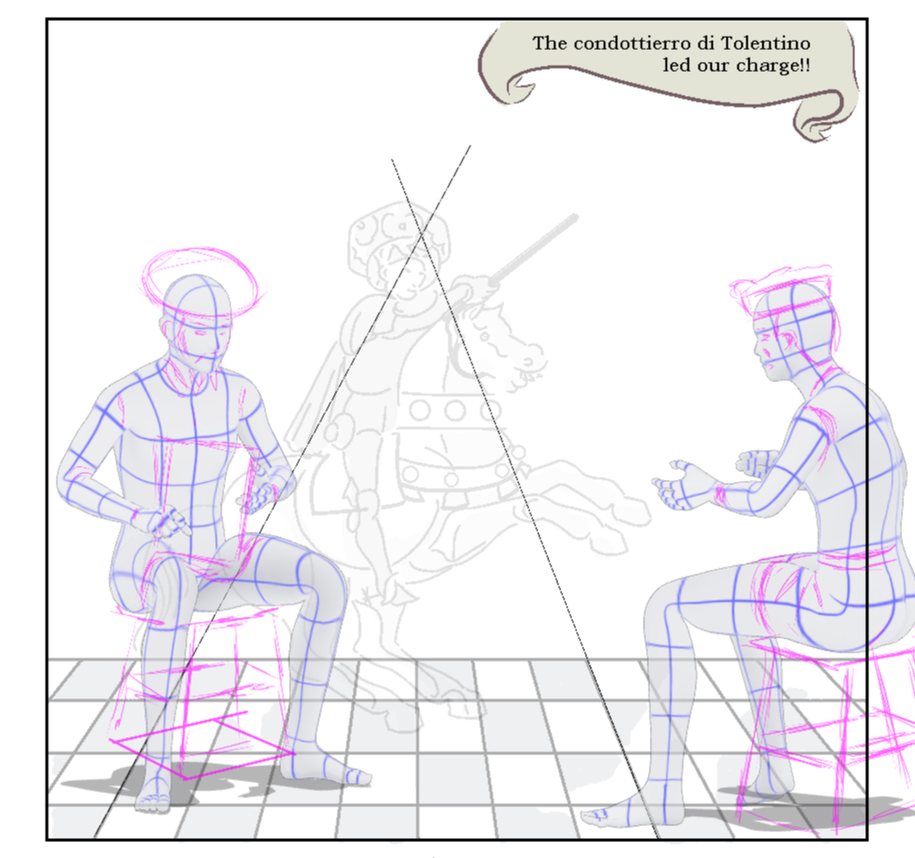
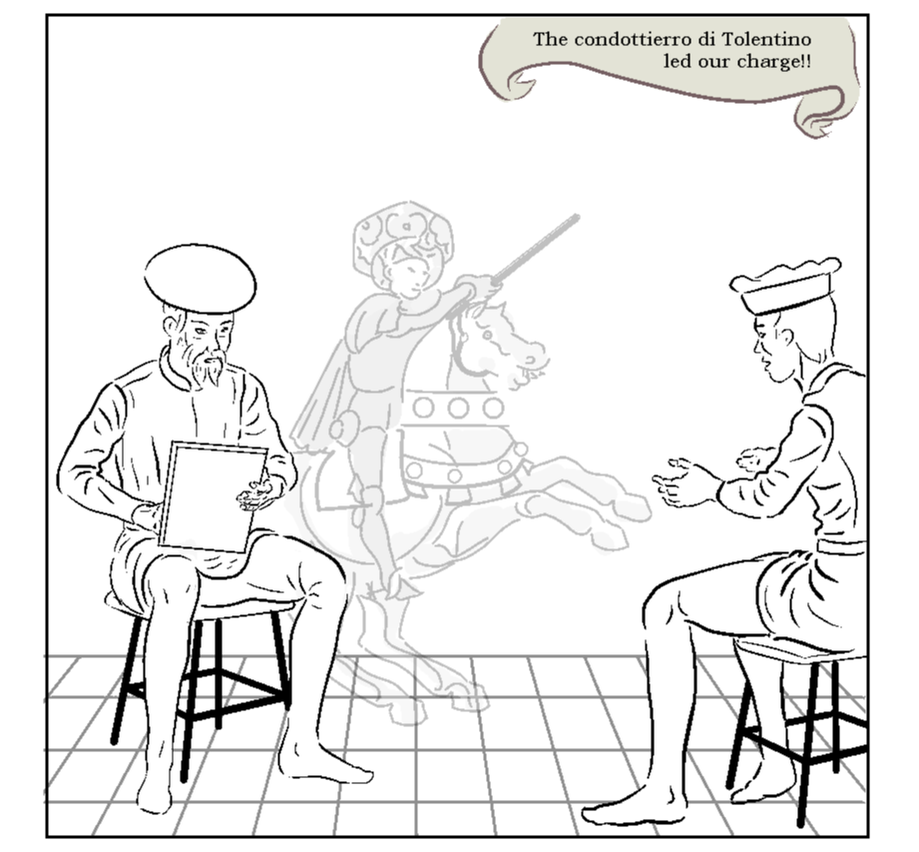
 RSS Feed
RSS Feed